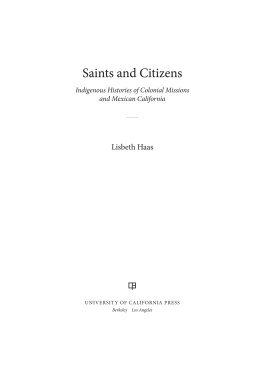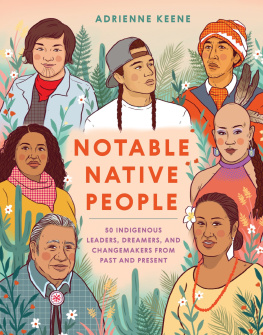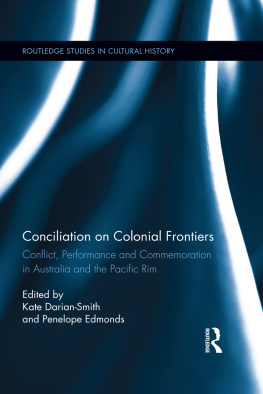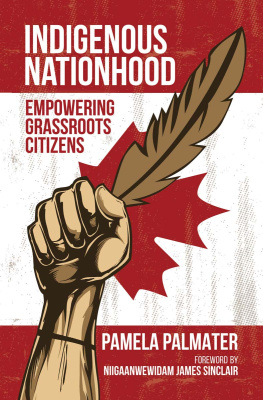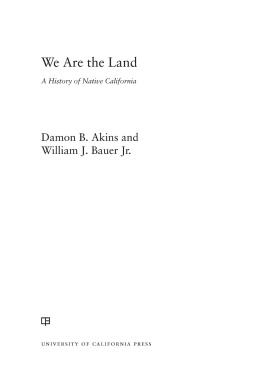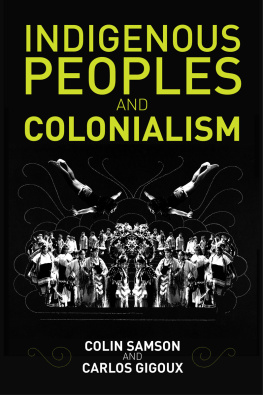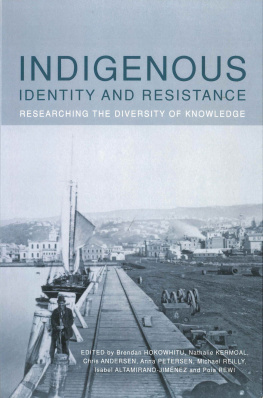

The publisher gratefully acknowledges the generous support of the Fletcher Jones Foundation Humanities Endowment Fund of the University of California Press Foundation, which was established by a major gift from the Fletcher Jones Foundation.
The publisher gratefully acknowledges the generous support of the Valerie Barth and Peter Booth Wiley Endowment Fund in History of the University of California Press Foundation.
Saints and Citizens
Saints and Citizens
Indigenous Histories of Colonial Missions
and Mexican California
Lisbeth Haas

UNIVERSITY OF CALIFORNIA PRESS
BerkeleyLos AngelesLondon
University of California Press, one of the most distinguished university presses in the United States, enriches lives around the world by advancing scholarship in the humanities, social sciences, and natural sciences. Its activities are supported by the UC Press Foundation and by philanthropic contributions from individuals and institutions. For more information, visit www.ucpress.edu.
University of California Press
Berkeley and Los Angeles, California
2014 by The Regents of the University of California
Library of Congress Cataloging-in-Publication Data
Haas, Lisbeth.
Saints and citizens : indigenous histories of colonial missions and Mexican California / Lisbeth Haas.
pages cm
Includes bibliographical references and index.
ISBN 978-0-520-27646-8 (cloth : alk. paper)
eISBN 9780520956742
1. Indians of North AmericaMissionsCaliforniaHistory.2. Indians, Treatment ofCalifornia.3. Indians of North AmericaEthnic identity.4. Indians of North AmericaLand tenureCaliforniaHistory.5. Missions, SpanishCaliforniaHistory.6. CaliforniaHistoryTo 1846.I. Title.
E78.C15H225 2013
305.8970794dc232013010524
Manufactured in the United States of America
23 22 21 20 19 18 17 16 15 14
10 9 8 7 6 5 4 3 2 1
In keeping with a commitment to support environmentally responsible and sustainable printing practices, UC Press has printed this book on Natures Natural, a fiber that contains 30% post-consumer waste and meets the minimum requirements of ANSI/NISO Z 39.48-1992 ( R 1997) ( Permanence of Paper ).
CONTENTS
List of Maps and Figures
MAPS
FIGURES
ACKNOWLEDGMENTS
I am grateful to the many people and institutions who supported this project from its start in the fall of 2000, with a fellowship from the Huntington Library, a University of California Presidential Research Fellowship, and a UC MEXUS research grant. They funded research in major archives, as did grants and fellowships from the Institute for Humanities Research and the Senate Committee on Research at the University of California, Santa Cruz. I appreciate a grant I received from the Hispanic Literary Recovery Project at the University of Houston. It provided funds for research trips to Rome and Bologna, Italy, to work with the manuscript of Luiseo scholar Pablo Tac and in related collections. I greatly appreciate a fellowship provided by the Davis Center at Princeton University that enabled me to finish the first draft of this book and to consider fear and other emotions in history.
This support opened doors to different and varied intellectual communities with whom I discussed the ideas developed herein. In particular I thank Steve Aron and Jeremy Edelman, whose conference on the comparative Americas at the Huntington Library in 2001 offered me the first venue for a lecture on the subject of Indigenous colonial painting in California. I thank the many scholars I met while in residence at the Huntington, especially Maria Lepowsky, whose knowledge influenced my work. I appreciate Steven Hackels conference on identity in Alta California at the Huntington Library in 2006, and the important Early California Population Project (ECPP) that he began at the Huntington about the same time I commenced work on this book.
The year I spent at the Davis Center at Princeton University enabled me to elaborate many dimensions of this project. I thank Gyan Prakash, the director of the center that year, and the other fellows who made excellent intellectual companions: Alexander Etkind, David Lederer, Melanie McAlister, Ron Schechter, Marla Stone, and Ravi Sundaram. The valuable discussions with Arcadio Daz-Quiones, Christina Lee, Jussara Quadros, and Laura Len Llerena from the Spanish and Portuguese Department, and with Tera Hunter from the History Department, enriched my thinking. I thank the late Sarah Hirschman for the long walks and discussions about life and literacy.
The archivists at the Huntington, Bancroft, and Santa Barbara Mission Archives and Libraries played an important role in accessing material and creating productive work environments. I found a rich trove of material at the Bancroft Library and benefited from the expertise of current and former archivists Teresa Salazar and Walter Brem, respectively. The Mission Archives and Library in Santa Barbara is a rich collection. In Santa Barbara, the collaboration of Chumash and non-Chumash scholars at the Natural History Museum and at the Presidio Trust created a distinctive context for research. I am especially grateful for the ample generosity of John Johnson from the Natural History Museum, with whom I consulted throughout this project. John carefully read the first draft and offered important comments.
Conversations with Ernestine Ygnacio-De Soto, a Chumash elder, and Niki Sandoval, from the Santa Ynez Band of Chumash Indians, influenced my approach. This book shares their emphasis on the perspectives and histories told by Chumash elders. Tribal histories in Chumash and Luiseo territory are generally embedded in specific geographies, and I am grateful to the San Luis Rey band of Mission Indians and to Mel Vernon, tribal chair, for conveying a sense of the persistent meaning of the former tribal space around Mission San Luis Rey. For his introduction to La Jolla reservation, I thank artist James Luna. I first began to think about these histories and tribal geographies in Baja California decades ago with Alejandrina Murillo de Melndrez, an aunt through marriage. Though deceased, I remember her here for the knowledge she conveyed and for her strength, and to thank her children and relatives.
Some of my graduate students at the University of California, Santa Cruz, contributed valuable research assistance for particular aspects of this book. I thank them and express my admiration for the subsequent work that each has accomplished. In the early phases of this project Jessica Delgado and Michelle Morton did preliminary research for me in conjunction with their own projects, as did Marie Duggan. I thank Natale Zappia for his contributions at a later date, and for the pleasure of advising him as he studied for his degree and wrote an excellent dissertation. I appreciate Sarah Ginn-Peelo for her work on the ECPP and for the interesting years of discussion as she completed her graduate work. I also thank current graduate students Alicia Romero and Martin Rizzo who have taken some of the concerns expressed here in new directions. I am grateful to my undergraduate students at Santa Cruz, who have often heard this material as I wrote it. I especially appreciate the interactions with students from my senior seminars and from the universitys mentorship programs. As a senior history major, and mentee, Carol Herndndez used her intelligence and expertise as she played a critical role helping me to prepare the final manuscript.
Next page
